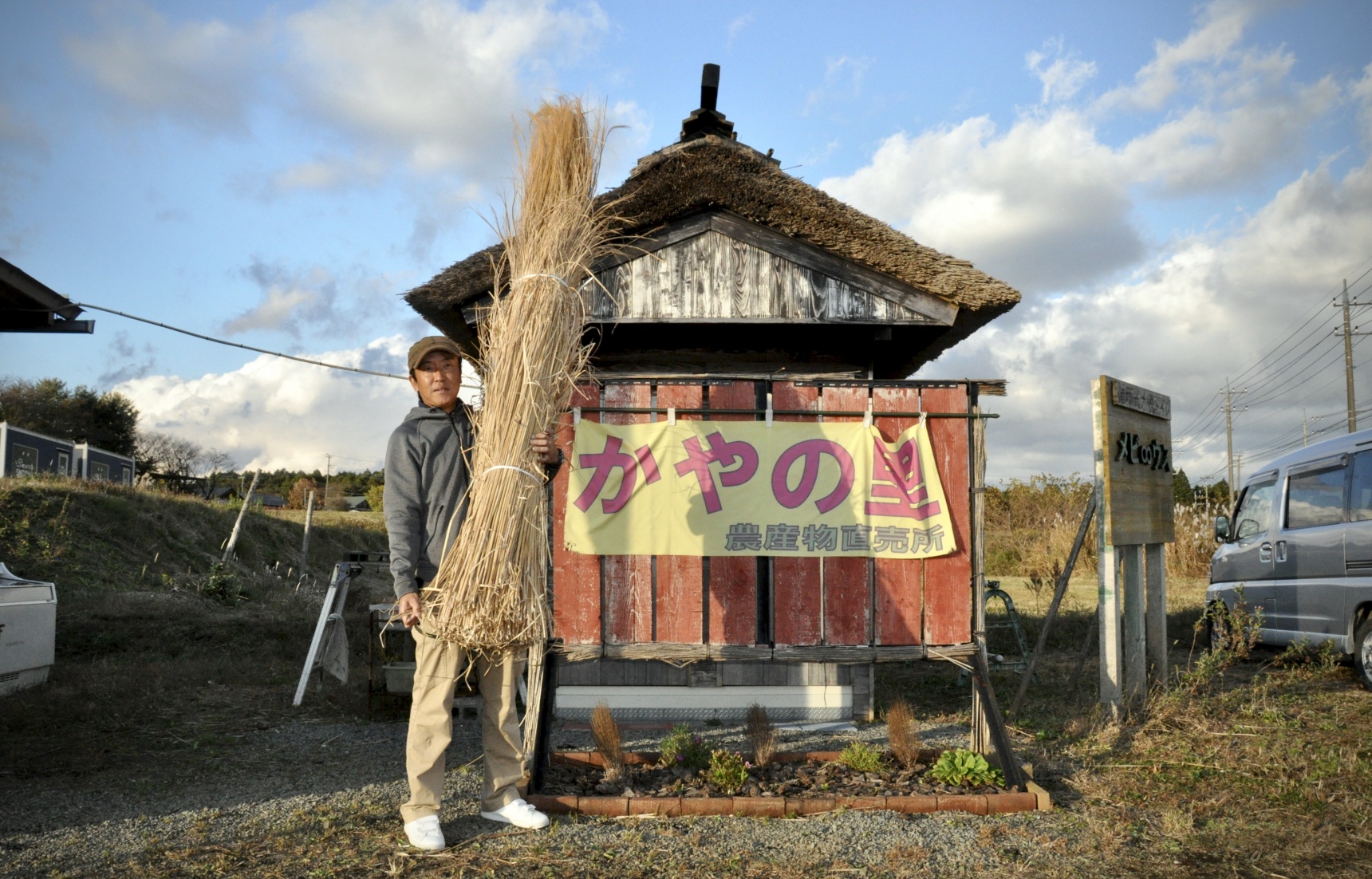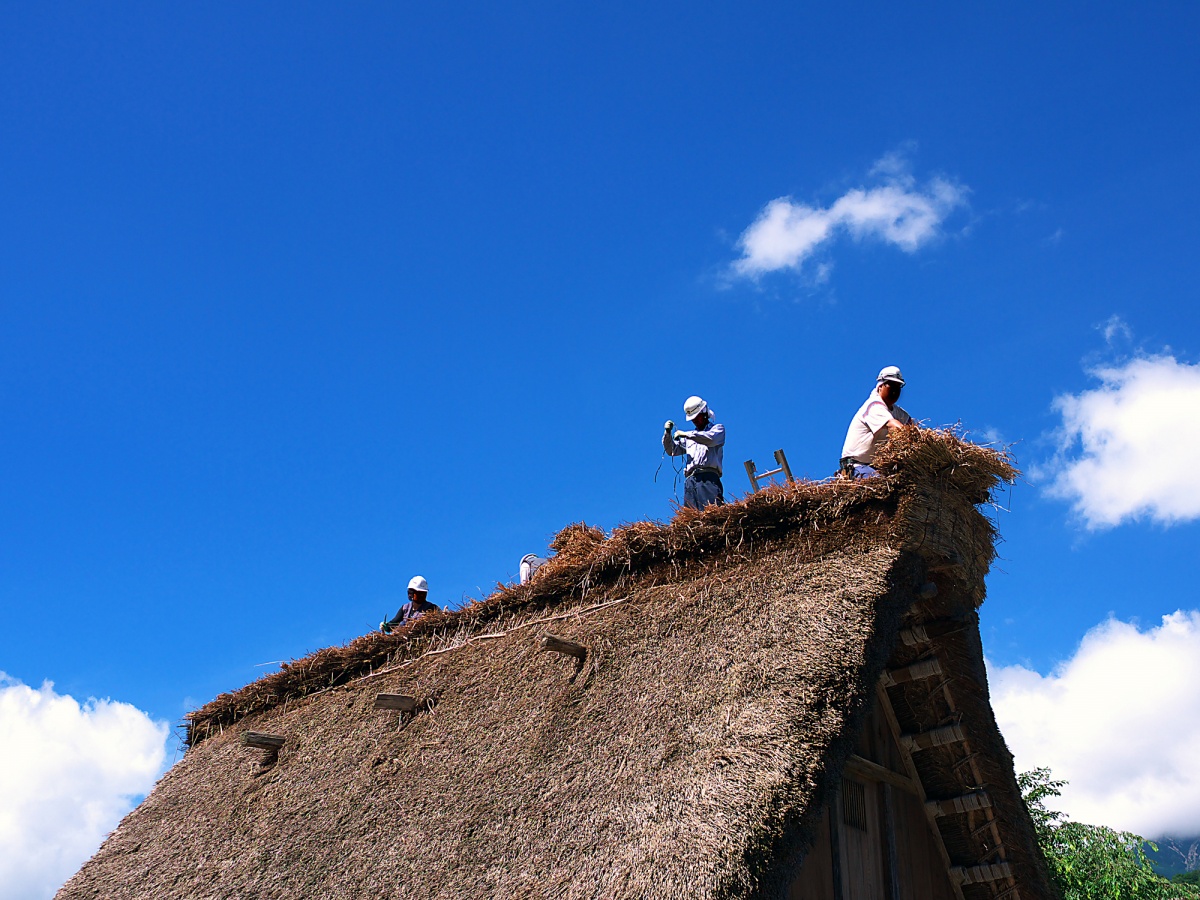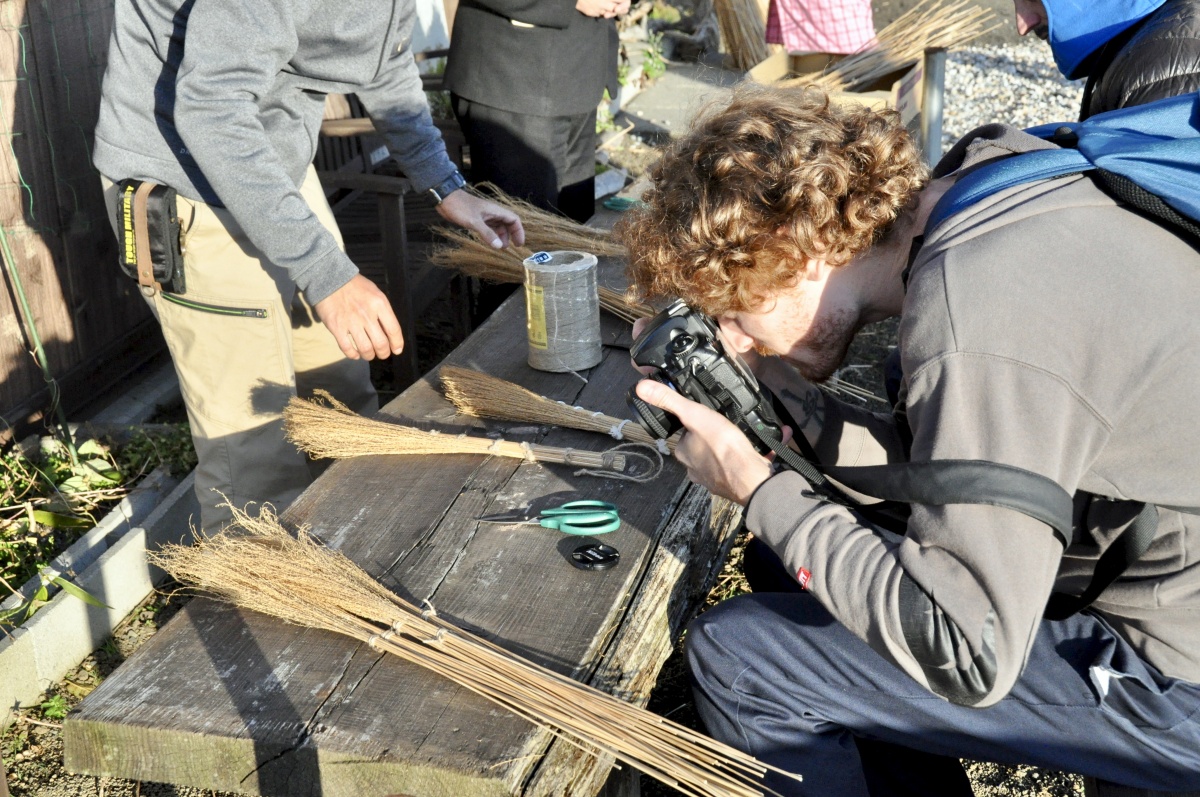Kaya no Sato: Life in Thatch

You may have seen the UNESCO-recognized thatched roofs of Shirakawa-go, but have you ever thought about where all that thatch comes from? The technique of making thatch, or kaya (かや), is a fading art in Japan, and one group is working to preserve it.
By Michael KanertKaya no Sato

https://pixta.jp/tags/%E5%B1%8B%E6%A0%B9%E8%91%BA%E3%81%8D%20%E7%99%BD%E5%B7%9D%E9%83%B7?utf8=%E2%9C%93&keyword=%E5%B1%8B%E6%A0%B9%E8%91%BA%E3%81%8D+%E7%99%BD%E5%B7%9D%E9%83%B7&search_type=0
Every 30 years, the thatched roofs, or kayabuki no yane (茅葺きの屋根), of historical buildings are typically replaced in a process called yanefuki (屋根葺き, meaning roofing), or fukikae (葺き替え, re-roofing). The key raw material for thatch is Japanese silver grass, or susuki (ススキ). However, while susuki grows wild across much of the country, most regions no longer produce it in sufficient quantity or quality to re-thatch a roof.
The Fuji-san Gotemba Kaya no Sato Kigyo Kumiai (富士山御殿場かやの里企業組合, literally "Mount Fuji Gotemba Home of Thatch Business Association") was founded in June 2012 to keep the skills and traditions of thatching alive. The key source of the group's raw materials is the JGSDF East Fuji Maneuver Area (陸上自衛隊東富士演習場・Rikujo Jieitai Higashi-Fuji Enshujo), a major training ground for the Japan Ground Self-Defense Force found on the southeast face of Mount Fuji.
Left largely to grow wild through the year, the area produces some 8,800 hectares (34 sq mi) of susuki, making it Japan's second-largest susuki resource (the largest is in Kyushu). Meanwhile, the efforts of Kaya no Sato have made this the nation's largest producer of kaya today, shipping from Kyushu to Hokkaido to maintain shrines, temples and other historical buildings across the country.

Consisting of roughly 35 members ranging in age from 30 to 80, Kaya no Sato is active largely from December to the end of January, cutting susuki in the maneuver area and drying it over the winter.
As Kaya no Sato president Tomokazu Osada explains, roughly 900 stalks of susuki are needed to make a single bunch of thatch, called a san-jaku taba (三尺束, literally "three shaku bunch"), where a shaku is an old unit of measurement roughly equal to the length of one's forearm. Some 5,000 such bunches are needed to re-thatch a single roof in Shirakawa-go. Once transported on horses carrying about ten bunches each, the thatch is now transported by truck, with Kaya no Sato providing roughly 90 percent of the thatch used at Shirakawa-go today.
Once the Japanese silver grass (susuki) is cut, the field is burned each year. The burning kills insect larvae that can lead the thatch to rot, while the remaining ash acts as a form of nutrition for new growth, allowing the next year's susuki to come in thick and strong. This is key, as thin susuki stalks cannot be used to make good thatch.
When they're not cutting susuki, the members of Kaya no Sato also run a farm stand (農産物直売所・nosanbutsu chokubaisho) roughly 3 kilometers (2 mi) southeast of the JGSDF maneuver grounds. The produce available varies with the season, with fuki no to (ふきのとう, edible flower buds of the fuki plant) available in April, wasabi in May, chestnuts in September, konnyaku in October and yamaimo (山芋, Japanese yams) in November. A corn festival is held on the first and second weekends of August each year.
Always looking for new ways to to promote its signature product, the stand also offers cute decorations and toys made of thatch, while visitors can pay ¥800 to try their hand at making a broom from bound kaya. Kaya no Sato is further working to strengthen its name recognition by branding its product fujigaya—kaya from Mount Fuji.
"We formed this organization to preserve this traditional technique," Kaya no Sato President Osada explains. "We hope to pass the traditions of kaya on to future generations." The preservation of many of Japan's historic structures depends on their efforts.
Kaya no Sato Farm Stand
Address: 719-4 Itazuma, Gotemba City, Shizuoka
Hours: 10 a.m.-1 p.m. weekdays / 10 a.m.-3 p.m. weekends




